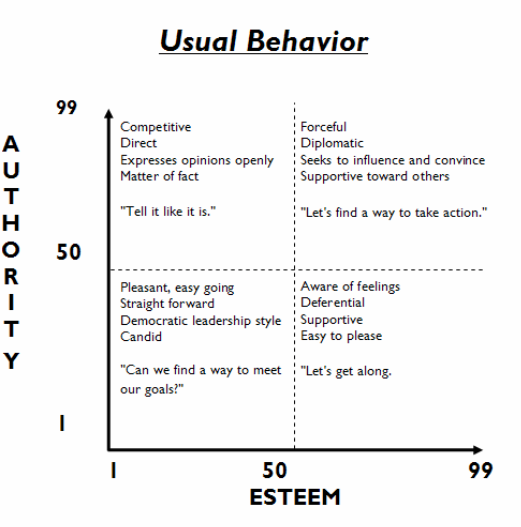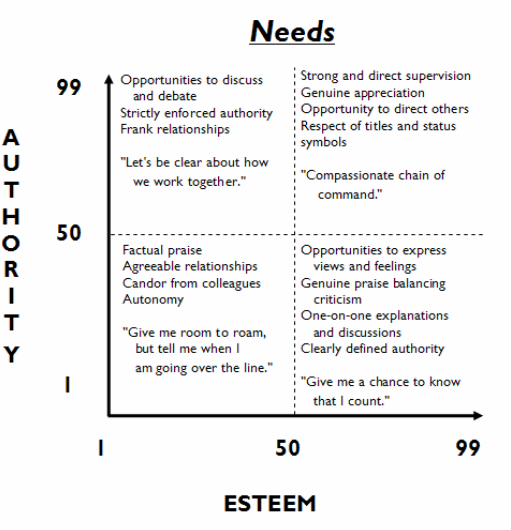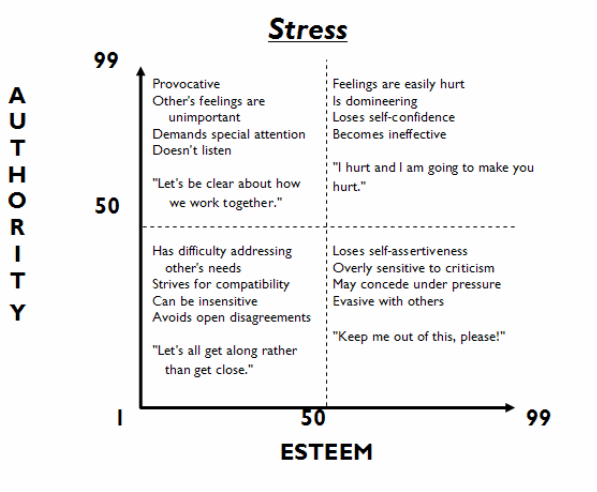Components ChartThe Birkman Components offer insight into a person’s behavior and motivations. Individually, the Components are very descriptive of individual’s Usual and Stress behavior, as well as their Needs. However, people do not exhibit just one behavior at a time. The eleven Components combined make up the total person. Therefore, when learning about an individual, it is important to look at Component combinations, not just isolated Components. Birkman has created a group format called the Components Chart. This format allows you to plot a group/team on various Component Combinations. In addition to being able to see where the individuals in a group are plotted, there are also descriptors for each quadrant (i.e. High/High, Low/High, High/Low, and Low/Low). You can access this format by going to the Group or Single Format section of BirkmanDirect®. This format features six critical Component Combinations: 1. Esteem & Acceptance–People Relations We will focus on the combination of the Authority and Esteem Components. High scores on the Authority can relate to willingness to engage in verbal debate and/or verbal confrontation, whereas low scores on Authority can indicate a deferential, democratic style. When Authority is combined with the Esteem score (which deals with candidness vs. sensitivity), defensive strategies or styles can be analyzed. |
Issues Impacted by Authority (Verbal Dominance)
- Cooperation/Conflict management
- Use of authority
- Listening skills
- Openness to others’ ideas
- Emphasis of delegation
Issues Impacted by Esteem (One on One, Personal)
- Managing performance problems and performance reviews
- Awareness of feeling and special needs of others
- The use of candor as an interpersonal tool
- Dealing with sensitive or tough business issues
An important point to remember when reviewing Component combinations is that there is not a good or a bad combination. As with the individual Components, when discussing combinations of Usual behavior the terminology and descriptions should be positive, and when discussing Stress behavior the terminology should be negative. However, when coaching a person or team on a Component combination, there may in fact be an ideal combination for the given task, culture, organization and/or team. In that case, consulting should be around how best to meet individuals’ needs so that it may be easier to adapt their Usual behavior. Also, additional training/consulting around what the desired behaviors actually “look like” may be necessary. Finally, individuals who need to adapt a different style may need training on how best to initiate that adaptation.
Below is a graph showing the descriptors for the Defensive Strategies Component Combination. We have shown the Authority/Esteem Component Combinations for Usual, Need and Stress.





